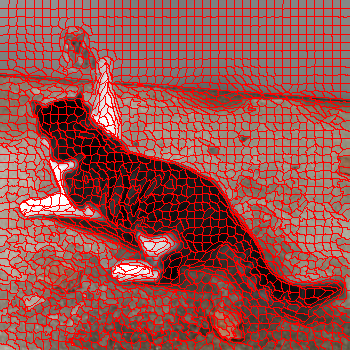Superpixel Segmentation Using Gaussian Mixture Model
Superpixel segmentation algorithms are to partition an image into perceptually coherence atomic regions by assigning every pixel a superpixel label. Those algorithms have been wildly used as a preprocessing step in computer vision works, as they can enormously reduce the number of entries of subsequent algorithms. In this work, we propose an alternative superpixel segmentation method based on Gaussian mixture model (GMM) by assuming that each superpixel corresponds to a Gaussian distribution, and assuming that each pixel is generated by first randomly choosing one distribution from several Gaussian distributions which are defined to be related to that pixel, and then the pixel is drawn from the selected distribution. Based on this assumption, each pixel is supposed to be drawn from a mixture of Gaussian distributions with unknown parameters (GMM). An algorithm based on expectation-maximization method is applied to estimate the unknown parameters. Once the unknown parameters are obtained, the superpixel label of a pixel is determined by a posterior probability. The success of applying GMM to superpixel segmentation depends on the two major differences between the traditional GMM-based clustering and the proposed one: data points in our model may be non-identically distributed, and we present an approach to control the shape of the estimated Gaussian functions by adjusting their covariance matrices. Our method is of linear complexity with respect to the number of pixels. The proposed algorithm is inherently parallel and can get faster speed by adding simple OpenMP directives to our implementation. According to our experiments, our algorithm outperforms the state-of-the-art superpixel algorithms in accuracy and presents a competitive performance in computational efficiency.
PDF Abstract


 BSDS500
BSDS500